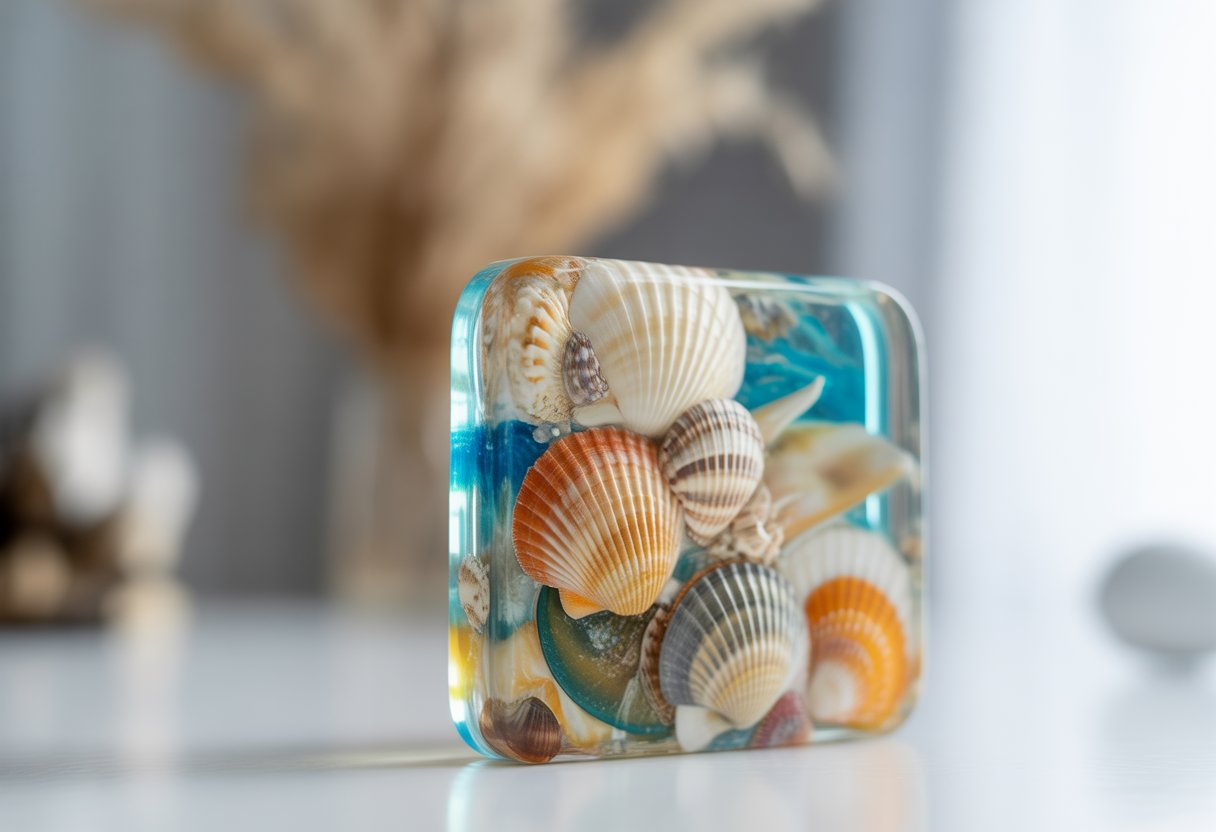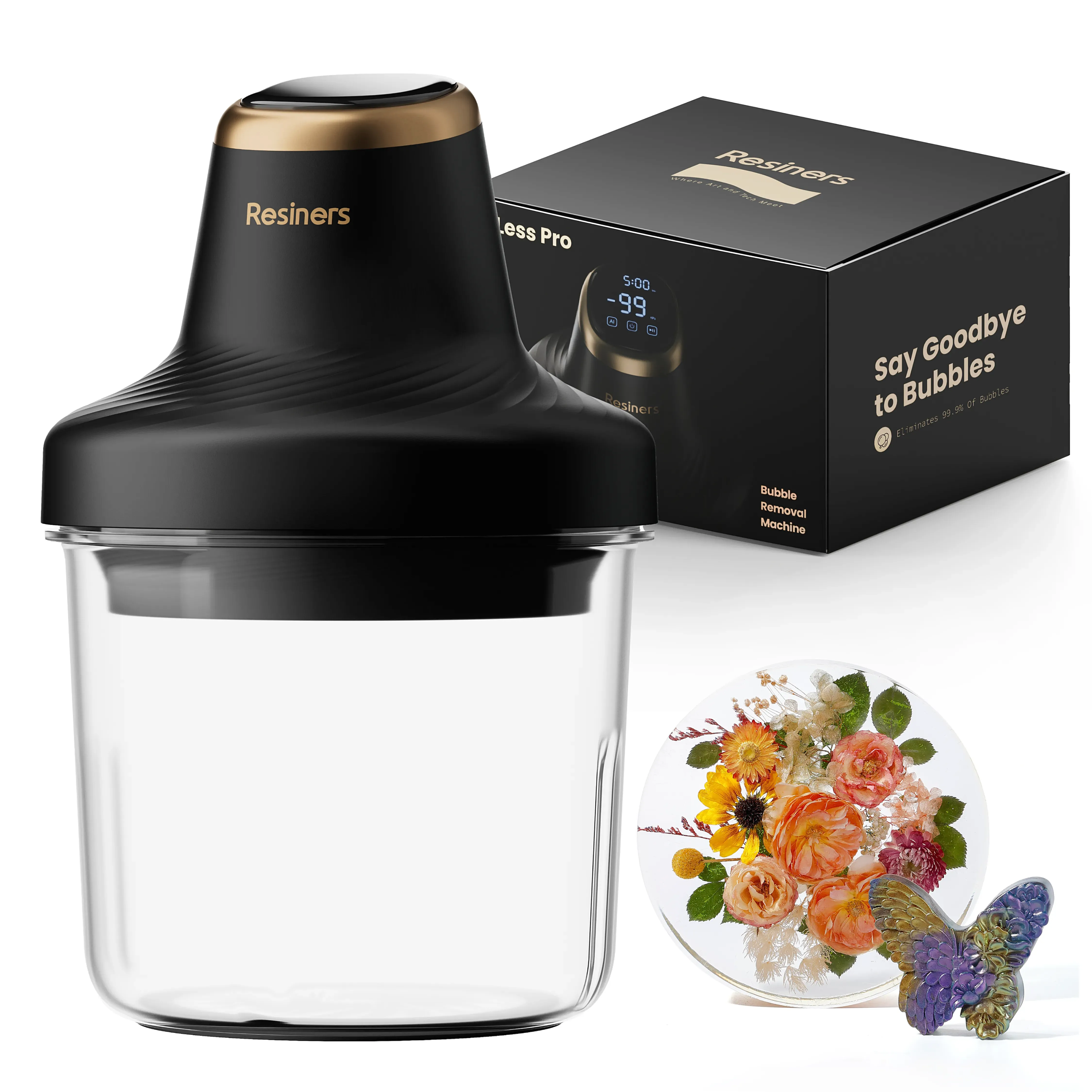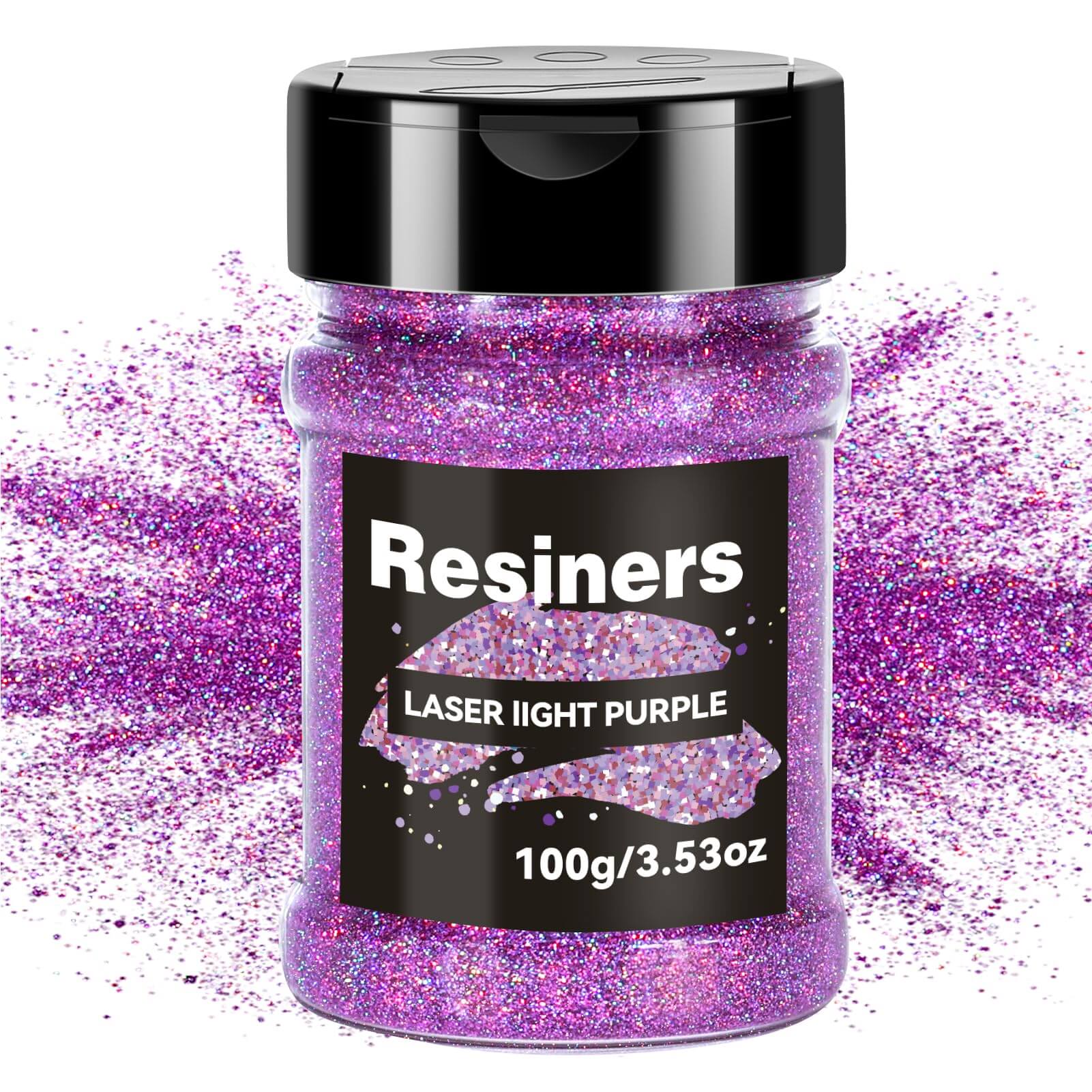How is resin made? It’s a question that sparks curiosity among artists, makers, and manufacturers alike. Resin has come a long way from its natural origins in tree sap to the advanced synthetic materials used today.
Modern resins are carefully engineered through chemical reactions that transform liquid components into strong, versatile polymers. These materials are the foundation for countless products—from jewelry and furniture coatings to 3D prints and industrial parts.
In this guide, we’ll take a look inside the resin-making process, exploring how it’s created, refined, and adapted for different creative and commercial uses.
Need a strong, crystal-clear finish for your next project? Explore our thick epoxy resins for flawless pours and lasting durability.
What Is Resin And Where It Comes From

Resin comes from two places: sticky plant secretions and modern synthetic manufacturing. If you’ve ever seen sap oozing from a tree, that’s natural resin. On the flip side, synthetic resins get cooked up in labs using chemical ingredients.
Natural Vs. Synthetic Resin Explained
When a plant gets hurt or stressed, it pushes out a thick, sticky substance—natural resin. Pine trees are especially famous for this; you’ll spot amber-colored drips on their bark.
Natural resins start off gooey but harden up when they hit air. They’re loaded with complex organic compounds, making them waterproof and tough. Synthetic resins, though, are a different story. Manufacturers build them by stringing together monomers through polymerization, letting them tweak the properties however they want.
Key differences between natural and synthetic resins:
- Source: Natural comes from plants, synthetic from petrochemicals
- Cost: Synthetic resins are usually cheaper to make
- Properties: Synthetic types can be engineered for specific strength or flexibility
- Uses: Natural resins show up in varnishes and incense; synthetic ones are everywhere else
Synthetic resins now dominate the market since you can dial in the features you need for any job.
Common Sources Of Natural Resin
Pine trees are the main source of natural resin most folks will ever see. When their bark gets scratched or broken, they leak a clear, sticky sap that hardens into resin.
Fir and spruce trees pitch in, too. These conifers use resin to close up wounds and fight off bugs or fungus.
Popular natural resin sources include:
|
Tree Type |
Resin Name |
Main Uses |
|
Pine |
Pine resin |
Varnishes, adhesives |
|
Frankincense tree |
Frankincense |
Perfumes, incense |
|
Myrrh tree |
Myrrh |
Perfumes, medicine |
|
Copal tree |
Copal |
Varnishes, incense |
Amber is ancient tree resin that’s been fossilized over millions of years. You can even find old bugs and plant bits trapped inside if you look close enough.
Dragon’s blood sounds wild, but it’s just a deep red resin from certain palms and trees, used in dyes and old-school medicine for ages.
The Rise Of Synthetic And Epoxy Resins
Synthetic resins took off in the early 1900s, once scientists figured out how to make plastics from petroleum. That move made resin cheaper and way more available.
Epoxy resin showed up in the 1940s. It’s a two-part system: you mix the resin and a hardener, and the result is a super-strong, clear material.
Common synthetic resin types you’ll run into:
- Polyester resin: Used in fiberglass and boat making
- Epoxy resin: Popular for crafts, coatings, and glues
- Polyurethane resin: Found in foams and flexible products
- Acrylic resin: Used in paints and clear castings
Modern manufacturing leans hard on synthetic resins. They’re reliable and can be tailored for things like UV resistance or flexibility.
These days, synthetic resins make up more than 90% of all resin production. It’s kind of wild how much they’ve changed everything from construction to electronics.
Bring your ideas to life with precision and ease. Browse our molds for resin casting to create stunning shapes and designs.
The Manufacturing Process Of Resin

To make resin, manufacturers mix specific raw materials and spark chemical reactions called polymerization. They have to watch temperature and pressure carefully, then test everything to make sure the resin meets industry standards.
Key Raw Materials And Chemical Components
Most synthetic resins start off as petrochemical derivatives—stuff pulled from oil and natural gas plants.
The main ingredients are monomers, those small molecules that link up during production. Ethylene, propylene, and styrene are some of the usual suspects.
Catalysts are essential. Titanium or aluminum compounds, for example, make reactions happen faster without sticking around in the final resin.
Manufacturers toss in additives for extra features:
- UV stabilizers to keep sunlight from breaking things down
- Colorants for looks
- Flame retardants for safety
- Plasticizers to make things bendy
Some companies are experimenting with plant-based materials to cut down on environmental impact. These bio-based resins can still perform well, though it’s not always a perfect swap.
Polymerization – How Resin Is Formed
Polymerization is where the magic happens—monomers link up into long chains, making the backbone of every synthetic resin.
There are two big flavors: Addition polymerization (no byproducts) and condensation polymerization (which spits out things like water).
Temperature and pressure need to be just right—usually somewhere between 100–300°F. Pressure varies depending on what resin you’re after.
Catalysts make things move along and help control how long those polymer chains get. Pick the right catalyst, and you get the strength or flexibility you want.
As monomers bond together, they form strong covalent connections. That’s what gives resin its toughness.
Once the desired molecular weight is hit, the process stops. Longer chains usually mean a tougher resin.
Mixing, Heating, And Cooling Stages
Everything kicks off with precise mixing in massive reaction tanks. Computers handle the ratios to get the right blend of monomers, catalysts, and additives.
Next comes heating. Industrial reactors slowly ramp up the temperature, keeping a close eye on pressure. This part can take hours.
Mixers keep things moving to prevent hot spots and ensure the reaction is even. That’s key for getting a consistent batch.
Temperature control is critical. Too much heat, and you risk side reactions. Too little, and polymerization drags or doesn’t finish.
Then, the cooling stage locks everything in place. Some resins cool on their own, others get a blast of air or water. Cooling right prevents cracks or weak spots.
At this point, the resin might get chopped into pellets, rolled into sheets, or shaped another way, depending on what it’s for.
Quality Control And Purification Steps
Quality checks start during production and keep going after. Sensors track temperature and pressure the whole time.
Lab techs pull samples and test for mechanical strength—how much force the resin can take before snapping. This helps confirm the batch meets standards.
Purification comes next. Distillation removes leftover monomers or any junk that slipped in. This step matters most for food or medical-grade resins.
They also test chemical resistance by dunking samples in acids, bases, and solvents to see how they hold up.
Other quality checks include:
- Spectrophotometric analysis for color
- Thermal stability testing at different temps
- UV resistance tests for outdoor stuff
- Molecular weight checks in the lab
Before anything ships out, there’s a final look at packaging and labels. All these steps help make sure every batch works the way it should.
Types Of Resin And Their Applications
Different resins do different jobs. Epoxy, polyester, and polyurethane rule the market, each with their own quirks. You’ll find them in everything from jewelry molds and industrial coatings to 3D printing and car parts.
Epoxy, Polyester, And Polyurethane Resins
Epoxy resin is tough and shrugs off chemicals. It’s the go-to for adhesives, coatings, or composite parts—bonds to almost anything and cures rock hard.
Polyester resin is cheaper and still pretty strong. You’ll spot it in fiberglass, boats, and car parts. It does shrink a bit while curing, so it’s not great for precision work.
Polyurethane resin stays flexible even after curing. You can get it soft or hard, depending on what you need. It’s more scratch- and impact-resistant than most other types.
Each resin needs its own mixing ratios and curing times. Epoxy takes longer but comes out stronger. Polyester cures fast but needs good airflow because of the fumes.
Casting, Coating, And 3D Printing Uses
Casting is perfect for jewelry, trinkets, and molds. Pour in the liquid resin, let it set, and you’ve got a solid piece. Clear resins are great for preserving flowers or other objects inside.
Coating protects surfaces—think wood, metal, or concrete. Thin resin layers can shield against chemicals and wear, especially in tough industrial settings.
3D printing resins cure under UV light. You’ll need a special printer for these, but they produce sharp details and smooth finishes.
Different jobs call for different resin features. Casting resins should pour easily. Coatings need to stick well and last. 3D printing resins must cure fast and not shrink too much.
Eco-Friendly And Plant-Based Resin Options
Bio-based resins come from plants like soy or corn, not petroleum. They’re a greener choice, though sometimes pricier.
Recycled-content resins mix in waste plastics to cut down on new material use.
Water-based resins have fewer harsh fumes, making them safer to work with and better for indoor projects.
The catch? Plant-based options can cost more and might not always perform exactly like traditional resins. It’s smart to test a sample before going all-in. Some eco-friendly resins shine in certain roles but not others.
Get perfectly blended resin every time. Check out our epoxy resin mixer machines for smooth, bubble-free results.
Conclusion: How is Resin Made?
Resin has evolved from natural tree sap to one of the most versatile materials in modern design and manufacturing. Whether made naturally or synthetically, its strength, clarity, and adaptability make it a favorite for creators and industries alike.
As new, eco-friendly resins emerge, makers now have more sustainable choices without sacrificing performance or beauty.
Ready to see what resin can do? Explore our guide on wood and resin projects for creative ideas to try at home.
Frequently Asked Questions
People often ask where resin comes from in nature and how manufacturers make synthetic versions. There’s also curiosity about what ingredients go into each type and what all this means for the environment.
How is resin made naturally?
Trees and plants produce sticky resins to protect themselves from insects and damage. Pine and fir trees ooze resin that seals wounds in their bark. When exposed to air, the resin hardens, and over millions of years, it can fossilize into amber.
What is the process of making resin?
Synthetic resin starts with raw materials from crude oil or natural gas, broken down into monomers. Through polymerization, these monomers link into long molecular chains. Additives like stabilizers, pigments, and plasticizers are mixed in, then the resin is heated and cooled to the desired texture.
What is resin made of?
Most synthetic resins use monomers such as ethylene, propylene, or vinyl chloride. Stabilizers and plasticizers improve durability and flexibility, while fillers and pigments adjust strength and color. Epoxy resins combine a base resin with a hardener, while natural resins contain organic compounds like terpenes and rosin.
Is resin environmentally friendly?
Most synthetic resins come from petroleum, making them nonrenewable and high in emissions. Recycling options are limited, and many resins persist in landfills for decades. Bio-based or water-based resins are more eco-friendly, offering renewable ingredients and fewer harmful fumes.











اترك تعليقًا
This site is protected by hCaptcha and the hCaptcha Privacy Policy and Terms of Service apply.